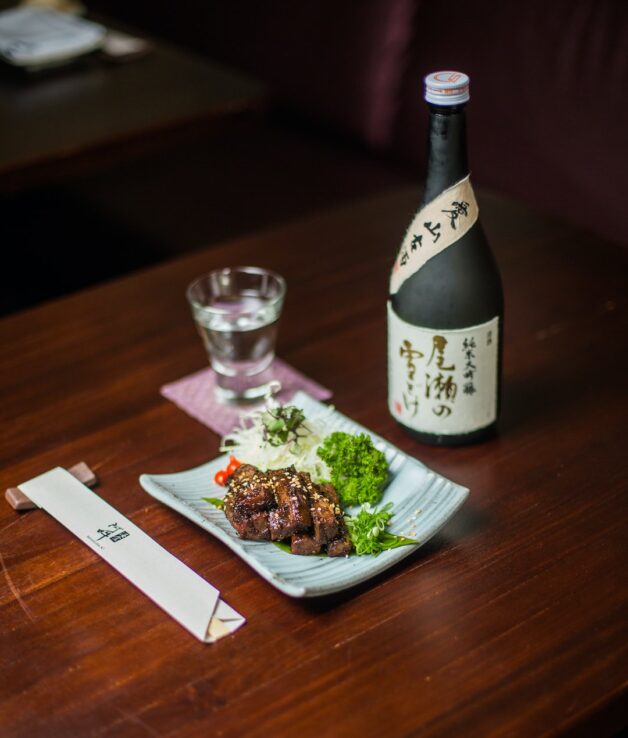Exploring Sake Pairings: Perfect Matches for Your Favorite Dishes
Sake is becoming increasingly popular in the United States, but it can also seem complicated at first. After all, there are different types of sake and you can drink it either warm or chilled.
So, how do you discover the best sake pairing for different dishes? It doesn’t have to be that complicated as long as you understand the basics. Read on to learn what pairs well with sake so you can serve an unforgettable meal.
What Is Sake?
Learning what pairs well with sake means you should have an understanding of how it’s made. So, what is sake?
Japanese sake is an alcoholic beverage made from fermented rice. As we mentioned, there are many types of sake. The more polished the rice, the better it tastes.
Premium sake means that at least 30% of the grain has been polished down. For instance, junmai sake is crafted using rice polished to 70% while daiginjo sake is polished down to at least 50% of the grain.
Generally, a good policy is to pair rich sake like junmai with dishes full of rich flavors. More delicate sake, such as daiginjo and ginjo go best with light dishes.
Some varieties include distilled alcohol. However, premium sake contains little or no distilled alcohol. Honjozo includes a small amount to enhance the flavors.
If you’re interested in learning more about the rich history of this beverage or if you want to pick up some useful facts about sake, we recommend our Sake Adviser Certification Course.
What Pairs Well With Sake?
Sake was made to go with Japanese cuisine, and you can’t go wrong by pairing traditional foods with this beverage.
It’s important to consider the acidity and texture as well as the serving temperature.
If you want to learn what pairs well with sake, our courses take a deeper dive into the topic. However, we’ve compiled some basic tips here.
Ginjo and Daiginjo
Sake created from rice that’s polished down to at least 60% is referred to as ginjo sake. It has more fragrant notes and pairs well with simple flavors or dishes with citrus.
Daiginjo and ginjo sakes have a fruity smell. They have a dry, light, and smooth flavor and a softer body. Mild fish dishes combine well with this sake pairing.
The best food with this sake includes light foods such as sushi and sashimi. Avoid heavy, oily, and meat-heavy dishes.
Honjozu and Futsushu
Any sake specialist will recognize these types, as they’re frequently a restaurant staple. Honjozu and futsushu sakes appeal to most people as they suit a variety of tastes.
These types have a lighter and drier flavor. Honjozo sake works well when served warm, making it a popular choice in winter. Futsushu sake is often called the “everyday sake,” as it’s versatile and makes up a large part of the market.
So, what pairs well with this sake?
While not as complex as ginjo or daiginjo sakes, Futsushu sake pairs well with almost any dish.
Nama
Nama sake is interesting because it’s unpasteurized. That means it wasn’t treated with heat. As a result, it’s similar to white wine.
If you’re not a sake specialist quite yet and you’re still learning, you can pair nama sake with any dish that would complement white wine.
Junmai
Jumai sake features a strong aroma and flavor. As such, you’d be best pairing it with foods that contain heavy seasonings, red meat, or fatty meats.
Junmai sake is distinct because it’s only made from rice, koji, and water. This pure rice sake has a full and heavy taste and it’s high in acidity.
Other Factors to Consider
Mastering the art of sake pairing takes some skill. You’ll have to consider other factors as well, including acidity, texture, and serving temperature.
High-acidity sakes can overwhelm simple dishes with pure, subtle flavors. As such, sake specialists will often pair them with foods high in fat content. Think of bold sakes paired with dishes that contain fats and oils.
A sake’s texture refers to structure and mouthfeel. Full-bodied foods go well with a similar sake. When learning how to pair sake well in one of our classes, you’ll discover the role that texture plays.
Finally, you must consider the serving temperature. This is crucial when dealing with sake.
Heating sake also makes any added alcohol more noticeable. You must be careful when serving it warm and with food, as it can overwhelm lighter flavors.
The best food with this sake includes dishes with bold flavors. When serving it chilled, combine it with salads and simple foods.
A more experienced sake specialist knows that the flavor can vary greatly with temperature and understands that you must choose the correct type and temperature when serving it.
However, to the beginner, it can feel like a lot to learn.
The Benefits of a Sake Specialist Class
Sake is a complex beverage with a rich history. Since it’s so versatile, it goes well with many dishes, even outside of Japanese cuisine. However, there’s also a strong possibility you can get it wrong if you don’t know how to serve it correctly.
Taking a sake pairing class and learning more about the intricacies of this beverage is the best way to do it justice. You’ll find out more facts about sake, including how it’s made and how each type can vary depending on how it’s brewed. You’ll also get key tips on how to pair sake with a variety of dishes.
Learn the Perfect Sake Pairing
We hope these sake pairing tips helped you to understand a bit more about how to choose the right foods to serve with different types of sake. Of course, we’ve only scratched the surface of what you should know.
If you want to take your education one step further, we have various classes to help you, such as our Certified Sake Adviser class or our Sake Sommelier Course. Sign up today and get certified.


